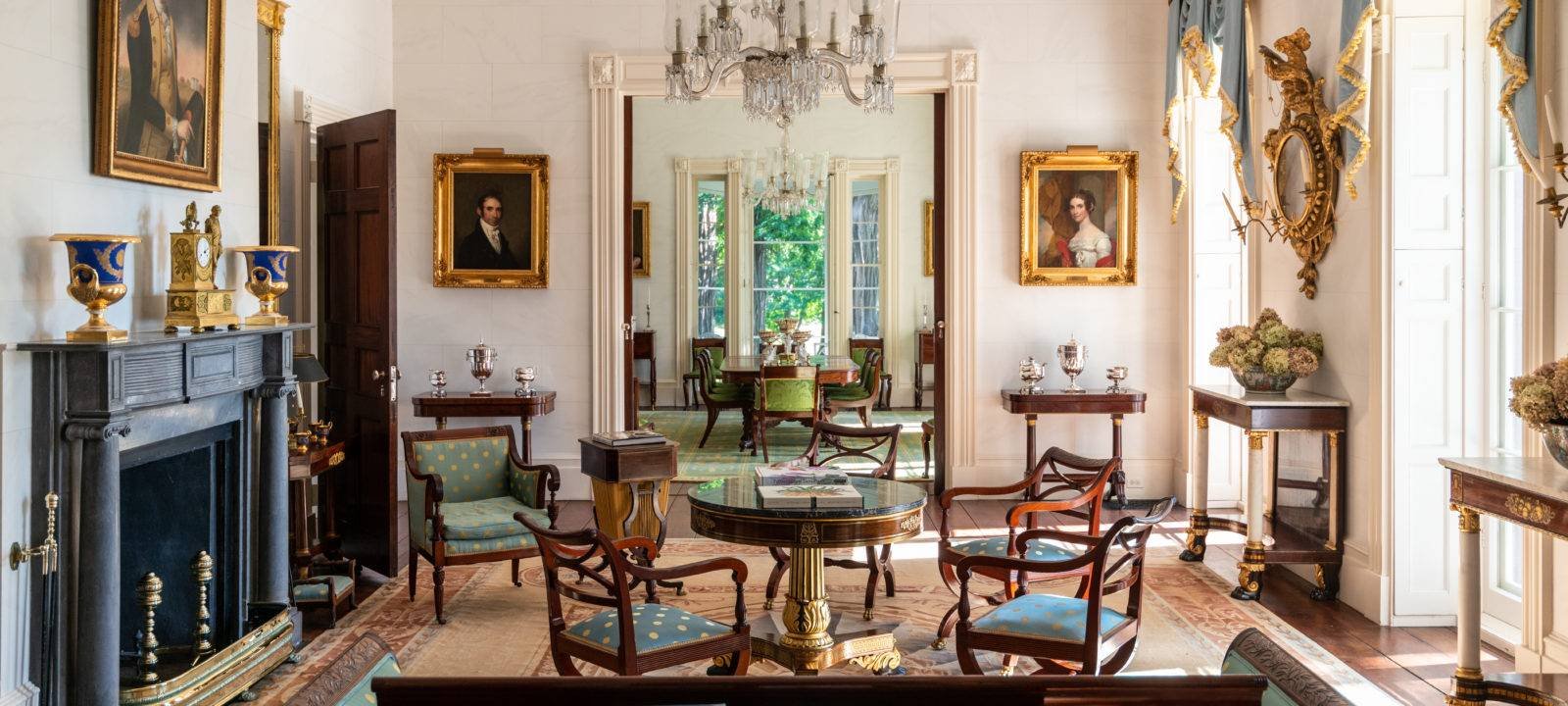Hidden Gem on the Hudson River

Parlor of Edgewater, Barrytown, Dutchess County, New York.

Edgewater sitting along the Hudson River.

Edgewater's music room.
Edgewater was built for John R. Livingston as a present to his daughter Margaretta on the occasion of her marriage to Captain Rawlins Lowndes Brown of Charleston, South Carolina. It was one of several river-side seats built by the Livingston family in this era, including Montgomery Place, Teviotdale, The Hill, and an eccentrically designed house known as “Old Turtle.”
In 1853, Edgewater was purchased from the Browns by Robert Donaldson, a North Carolina native who moved to New York to pursue a career in business. Thirty-five years earlier, Donaldson had toured the Hudson River Valley and recorded in his private journal he thought it “the consummation of Earthly Bliss to live in one of those palaces, on such a Noble River, under such a Government.”
Donaldson was committed to the house and enlarged it the following year with an octagonal library after designs by Alexander Jackson Davis. Davis also provided designs for two new picturesque gatehouses flanking the entrance to the property. Other surviving early structures include two small frame cottages, which were probably used by domestic servants. Historical records indicate that during the Donaldsons’ ownership of Edgewater, a majority of the servants employed by the family were recent Irish immigrants.

Gore Vidal playing with dogs in the back yard of Edgewater. Gore Vidal owned Edgewater from 1950-1969.

William L. Thompson (left) and Richard H. Jenrette (right) standing on the portico of Edgewater, 1970.
Mr. Jenrette described sneaking onto the property in 1969 while it was owned by Gore Vidal, and soon learned that Vidal was looking for a purchaser. Jenrette promptly tendered an offer, which was accepted. Jenrette inscribed his own deep affection for the property by quoting Robert Donaldson’s reverie—“the consummation of earthly bliss”—on one of the neoclassical buildings added in the late twentieth century.

Pool House of Edgewater, built in 1997 and designed by Michael Dwyer for Richard H. Jenrette.
Donaldson, Downing, and Davis

Edgewater's Octagonal Library, designed by AJ Davis and added by Robert Donaldson in the 1850s.

Gatehouse built for Edgewater and designed by A.J. Davis. Now privately owned homes, independent of the Edgewater estate.
Over the years, Edgewater has been enlarged and improved by some of America’s most important architects. Though the original designer of Edgewater is unknown, William Nathaniel Banks hypothesized in 1982 that it might have been Robert Mills, on the strength of its Doric colonnade facing the Hudson River and Mills’ Charleston connection to Captain Lowndes Brown. Further research is needed to determine whether another, more local, designer might have been involved.
Much clearer is the person responsible for Edgewater’s refurbishment in 1854: Alexander Jackson Davis, whose command of historic styles and inventive, picturesque manner of composition set him apart from his contemporaries and gave the house its present form.
Davis’ plan for the house’s improvements survives in the Avery Library at Columbia University. He also designed two new gatehouses for the property’s entrance, and was likely responsible for the refurbishment of the main house in an updated Greek Revival style.

Guest House of Edgewater, built in 1997 and designed by Michael Dwyer.
This was not the first time that Robert Donaldson had worked with Davis, as Davis had designed his former house, Blithewood, as well as its gatehouse. Donaldson was also a sponsor of Davis’s architectural pattern book, Rural Residences.
For its romantic landscape, Donaldson turned to the prominent American landscape designer Andrew Jackson Downing. After years of collaboration, Downing was so impressed by Robert Donaldson’s patronage that he dedicated his own pattern book, Architecture of Country Houses, to him, calling Donaldson an “arbiter elegantium,” or “arbiter of elegance.”
Richard H. Jenrette continued this tradition of hiring talented architects to improve the grounds at Edgewater when he commissioned Michael Dwyer to design a new guest house and pool house in 1997.

Pool House, built in 1997 and designed by Michael Dwyer.



